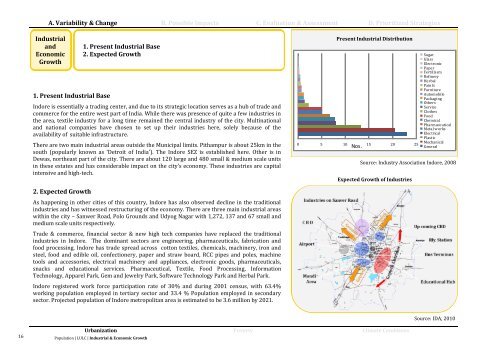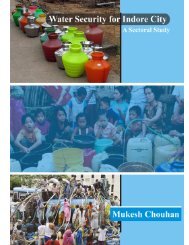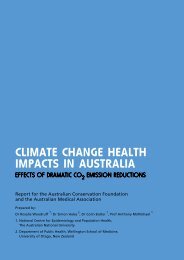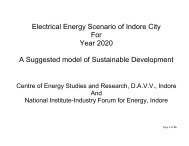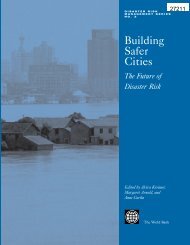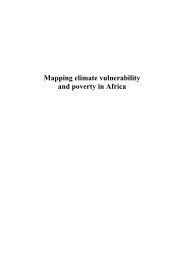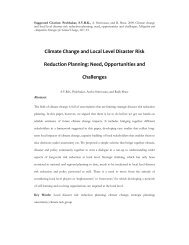Indore City Resilience Strategy - ImagineIndore.org
Indore City Resilience Strategy - ImagineIndore.org
Indore City Resilience Strategy - ImagineIndore.org
You also want an ePaper? Increase the reach of your titles
YUMPU automatically turns print PDFs into web optimized ePapers that Google loves.
A. Variability & Change B. Possible Impacts C. Evaluation & Assessment D. Prioritized Strategies<br />
Industrial<br />
and<br />
Economic<br />
Growth<br />
1. Present Industrial Base<br />
1. Present Industrial Base<br />
2. Expected Growth<br />
<strong>Indore</strong> is essentially a trading center, and due to its strategic location serves as a hub of trade and<br />
commerce for the entire west part of India. While there was presence of quite a few industries in<br />
the area, textile industry for a long time remained the central industry of the city. Multinational<br />
and national companies have chosen to set up their industries here, solely because of the<br />
availability of suitable infrastructure.<br />
There are two main industrial areas outside the Municipal limits. Pithampur is about 25km in the<br />
south (popularly known as ‘Detroit of India’). The <strong>Indore</strong> SEZ is established here. Other is in<br />
Dewas, northeast part of the city. There are about 120 large and 480 small & medium scale units<br />
in these estates and has considerable impact on the city’s economy. These industries are capital<br />
intensive and high-tech.<br />
Present Industrial Distribution<br />
0 5 10 15 20 25<br />
Nos.<br />
Expected Growth of Industries<br />
Sugar<br />
Glass<br />
Elec tronic<br />
Paper<br />
Fertilizers<br />
Refinery<br />
Herbal<br />
Paints<br />
Furniture<br />
Automobile<br />
Packaging<br />
Others<br />
Service<br />
Clothes<br />
Food<br />
Chemical<br />
Pharmaceutical<br />
Metal w orks<br />
Elec trical<br />
Plastic<br />
Mechanical<br />
General<br />
Source: Industry Association <strong>Indore</strong>, 2008<br />
2. Expected Growth<br />
As happening in other cities of this country, <strong>Indore</strong> has also observed decline in the traditional<br />
industries and has witnessed restructuring of the economy. There are three main industrial areas<br />
within the city – Sanwer Road, Polo Grounds and Udyog Nagar with 1,272, 137 and 67 small and<br />
medium scale units respectively.<br />
Trade & commerce, financial sector & new high tech companies have replaced the traditional<br />
industries in <strong>Indore</strong>. The dominant sectors are engineering, pharmaceuticals, fabrication and<br />
food processing. <strong>Indore</strong> has trade spread across cotton textiles, chemicals, machinery, iron and<br />
steel, food and edible oil, confectionery, paper and straw board, RCC pipes and poles, machine<br />
tools and accessories, electrical machinery and appliances, electronic goods, pharmaceuticals,<br />
snacks and educational services. Pharmaceutical, Textile, Food Processing, Information<br />
Technology, Apparel Park, Gem and Jewelry Park, Software Technology Park and Herbal Park.<br />
<strong>Indore</strong> registered work force participation rate of 30% and during 2001 census, with 63.4%<br />
working population employed in tertiary sector and 33.4 % Population employed in secondary<br />
sector. Projected population of <strong>Indore</strong> metropolitan area is estimated to be 3.6 million by 2021.<br />
Source: IDA, 2010<br />
16<br />
Urbanization Poverty Climate Conditions<br />
Population | LULC | Industrial & Economic Growth


